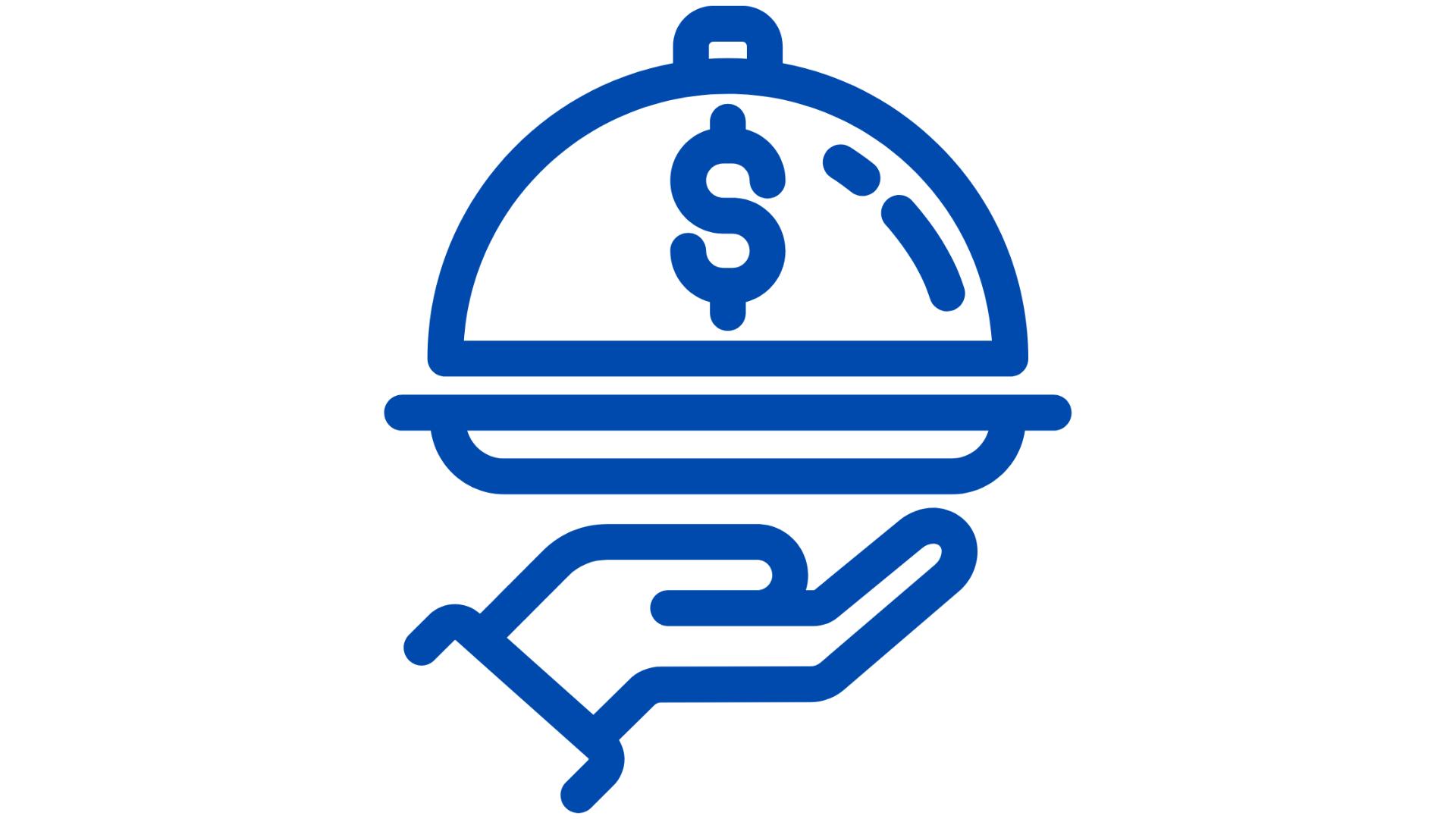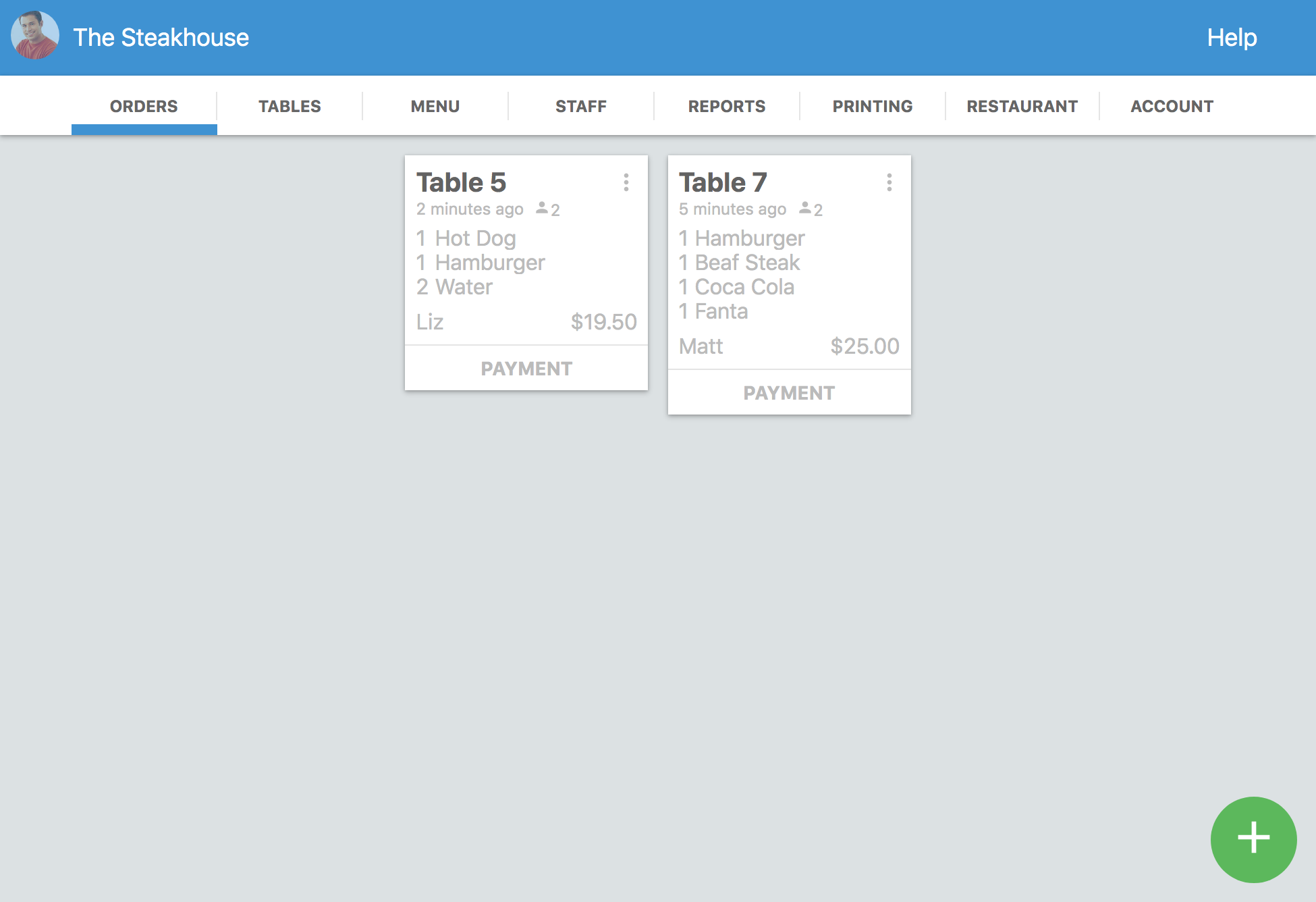Calculating food costs is very important for your restaurant. This is because:
- It helps you calculate your restaurant’s profitability
- It also helps you to set the prices for your food and beverages
If you don’t have a clear idea of your restaurant’s food costs, your restaurant might be losing money. Also, it will be hard for you to set prices for your restaurant’s food items and beverages.
This is why we will cover this topic in detail to remove any confusion regarding food costs.
In this article, we will teach you how to calculate food cost for your restaurant with practical examples. We will also give you some tips on how to reduce your restaurant’s food costs.
So let’s get started!
What Is Food Cost Percentage? (Food Cost Formula)

Food cost percentage is the total revenue generated from a food item divided by the total cost of the ingredients.
Suppose you are selling $1000 worth of burgers every month. But for making the burger, you’ll need ingredients like buns, beef, cheese, etc. These ingredients are costing your restaurant $320 per month for making the burgers.
So, the food cost percentage for burgers will be :- (320 ÷ 1000) x 100% = 32%
What does the Food cost percentage signify? Why are we calculating this percentage?
Food cost percentage shows what portion of your revenue is being used for buying the ingredients for that food item.
The main reason for calculating this is to have an idea of the profitability of a food item.
What is a profitable Food cost percentage?
Important: The average range of food cost for a restaurant is: 25%-35%. This means that if it’s higher than 35%, you must find ways to reduce it to increase your restaurant’s profitability.
Here is a list of good food cost percentages for different categories:
Overall
20 – 40%
Food
25 – 40%
Wine
30 – 45%
Beer
30 – 35%
Liquor
10 – 20%
Cocktails
5 – 25%
Non-alcoholic beverage
10 – 30%
How To Calculate Food Cost? (The Food Cost Formula)

We have talked about what food cost is and what it signifies. Now, let’s talk about how you can calculate the food cost for your restaurant in a practical way.
You can calculate it by tracking the weekly inventory of your restaurant. Let’s see how:
- List all the food ingredients that you receive when the week begins.
- Calculate how much you have spent on your inventory. Add the cost of each item.
- Keep track of any other purchases that you make for that week and add them to the list.
- Check your restaurant’s inventory again at the beginning of the next week.
- Check your total sales for the week.
- Calculate actual food cost for the week using this food cost formula:
Food Cost Percentage = (Beginning Inventory + Purchases – Ending Inventory) ÷ Food Sales
Let’s clarify this process with a real-life example:
- Initial inventory: $10,000
- Additional purchases = $5,000
- Ending Inventory = $12,000
- Food Sales = $10,000
- Food Cost Percentage = (10,000 + 5,000 – 12,000) ÷ 10,000
- Food Cost Percentage = 3,000 ÷ 10,000
- Food Cost Percentage = 0.30 or 30%
Note: Is your food cost percentage too high or low? Ensure that you’ve counted each item correctly, entered the right measurement unit, and accounted for the sales correctly.
How to Calculate Food Cost Per Serving? (Food Cost For A Dish)

We have shown you how you can find the total food cost for your restaurant. Now, you have to determine which are your most profitable menu items and which are not profitable.
This is very important since this data will help you to set prices for your menu items accurately. This is also called ‘menu engineering.’
Suppose, if a certain menu item has a food cost of over 35%, you should definitely increase its price. Else you won’t be able to make a profit by selling this item.
Similarly, if a certain food item has a food cost below 25%, you should lower its price to help it sell more and increase your restaurant’s revenue.
So how do you calculate the food cost percentage for a specific menu item?
It’s simple; you will need to calculate the cost of all the ingredients and then divide the result by the selling price of that menu item.
For example, you want to calculate the food cost for one burger, it will be;
- Beef = $1
- Bun = $0.25
- Sauce = $0.1
- Cheese = $1
- Tomatoes = $0.5
- Potato = $0.75
Total cost of ingredients per serving = 1+0.25+0.1+1+0.5+0.75 = $3.6
Suppose you are selling the burger for $12, your food cost percentage will be:
The total cost of ingredients ÷ Sale price of the item
3.6/12 = 0.3 = 30%
How To Calculate The Ideal Food Cost Percentage?

Previously, we calculated the food cost of your restaurant using the ‘inventory difference’ method.
But that formula gives you the food cost for a real-life scenario. It is often common that the number is higher than the ‘ideal food cost’.
But what is the ‘ideal food cost’?
Let’s choose a menu item. So we can say that:
- Total Weekly Food Cost = Food Cost of Ingredients x Weekly Amount Sold
- Total Sales of the Food Item = Sale Price x Weekly Amount Sold
Ideal Food Cost Percentage = Total Cost ÷ Total Sales
For example:
- Total Cost Of Food Ingredients = $2800
- Total Sales Of Burger = $10,000
- Ideal Food Cost Percentage = 2800 ÷ 10,000
- Ideal Food Cost Percentage = 0.28 = 28%
Important: Commonly, your ideal food cost will be lower than your actual food cost. Here your actual food cost could have been 35%. This happens because, in real life, there’s theft or food wastage.
So your goal is to make your ideal food cost equal to your actual food cost. This can be done by taking measures against theft, food wastage, or other factors.
How to Set the Sale Price of your Restaurant’s Food Items?

Setting your menu prices correctly is a huge factor for your restaurant’s success. If you ignore this, your restaurant might have some menu items which aren’t profitable for your business. That’s why it is important to do a price analysis for every menu item of your restaurant.
Here’s the formula for determining the sale price of any food item:
Ideal selling price of food = Cost per serving / Ideal food cost percentage
This formula is also beneficial for setting the prices for your menu items.
Example: Suppose the cost of ingredients for a burger is $2. We know that we have to keep a food cost between 28-35%.
Inserting that number into the formula, we can calculate that we have to keep the price of the burger between - $5.7 to $7.1
Realistically, we should keep it between $6 - $7.
Tracking your prices and acting accordingly
Suppose, after calculating, you finally increase the price of your burgers to $7. Two scenarios that are likely to happen.
1. Burger Sales Decreases
In this scenario, your monthly sales report shows that your burger sales have dropped after increasing the price.
This means that your customers are not willing to pay $7 for the burger. So you will have two options:
- Drop the burger price down to $6 and check the sales of burgers again
- Reduce your food costs using the techniques we mention in the next section
2. Burger Sales Increases
In this scenario, your monthly sales report shows that your burger sales have increased even after increasing the price of the burger.
This means that the customers can afford to pay even a higher price. In this case, you can increase the price of the burgers to earn greater profits.
Note: In both of the scenarios, tracking your sales is crucial. Always keep track of your monthly sales reports. A restaurant management software (e.g., Waiterio) can generate sales reports for every menu item.
How To Reduce Food Cost Percentage?

It’s clear that a lower food cost percentage means higher profit. Also, sometimes your restaurant must reduce food costs to avoid a loss.
So here are some tips that will help you lower your food cost percentage:
- Find cheaper vendors: If you can get the same quality of ingredients at a lower price, then it will definitely reduce your food cost.
- Reduce the portion of your dishes: For example, offer a 220g burger instead of a 250g.
- Reduce the quantity of ingredients used: For example, slightly reduce the amount of cheese and beef used for making your burger
- Don’t give away too much for free: Cut down on offering things like free bread and butter if your food costs are too high.
- Menu engineering: Be thorough while setting your restaurant’s food prices. Calculate your food cost percentage for every item on your menu and set the price accordingly.
Note: It is important to remember that you should never compromise the quality of your ingredients to reduce the food cost. It will just drop your food quality and hurt your restaurant’s brand name. Maintaining a good relationship with customers is very important for any restaurant.
Why is it Food Cost Percentage Important?
Briefly, food cost percentage is crucial because it helps you to set the right price for your food. It also helps you track your restaurant's profit.
Suppose Daniella runs a successful restaurant that gets 500 customers per day. If she miscalculates the food cost of a menu item and sets the price $0.5 lower by mistake, it might cost the business over $100,000 loss in revenue! Even small losses might add up and lose your restaurant a lot of money in the long run.
That’s why it is a great idea to calculate the food cost percentage for every item in your restaurant. Most successful restaurant franchises follow this practice.
Here are some benefits of knowing your food cost percentage:
A. Understand the profitability of every food item
Once you have calculated the food cost percentage of all your food items, you’ll have a clear idea of which menu items are most profitable and which items are likely to cause your restaurant a loss in revenue. When you have this information, you can make intelligent business decisions.
B. Menu Engineering
We mentioned before, having a clear idea of your food cost percentage helps you set menu prices. Also, you can tweak prices and see how your customers react. Also, you can introduce new items to your menu without worrying about how to set their price.
How You Can Manage Food Cost Using A Software

Calculating food costs can be tedious. You will have to keep track of your restaurant's inventory, check invoices, and track sales reports. Anyone would find this challenging.
Fortunately, technology has evolved, and it has made this entire process much easier. A restaurant management software (e.g., Waiterio software) can generate detailed sales reports of every food item on your menu. Something like:
Monthly Sales
- Burger (Small) : $575
- Pizza (7 inch): $1725
- Pasta : $459
These reports will make it much easier to calculate your food cost percentage. This is why having restaurant management software is crucial for all restaurants.
There are a lot of POS systems out there in the market. However, if you haven’t chosen your POS software yet, I would recommend trying out our Waiterio restaurant POS software.
Useful Articles For New Restaurant Owners
Here are some articles that can help you:
- How to do restaurant marketing. (24 Brilliant Ideas)
- Complete equipment list for restaurant kitchen





